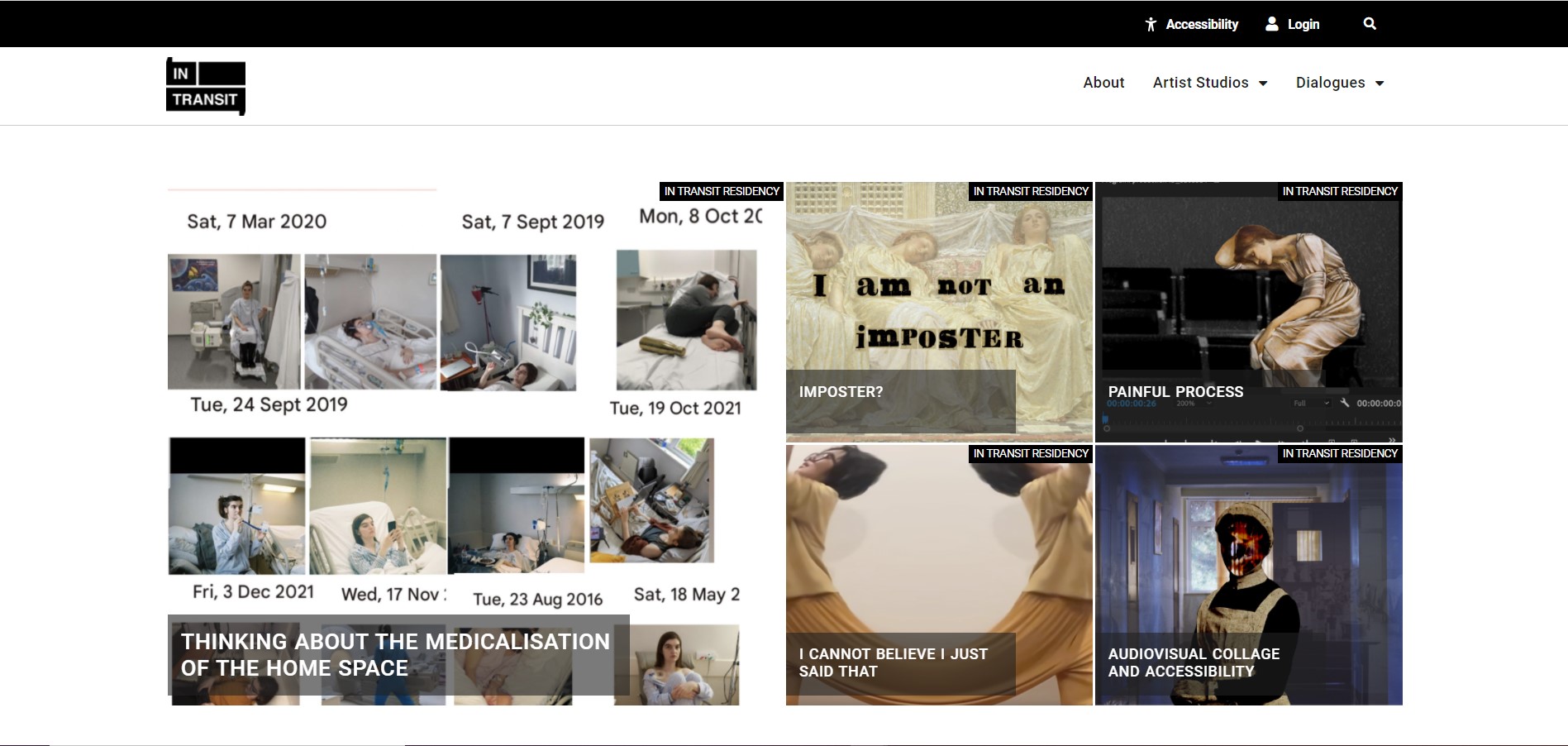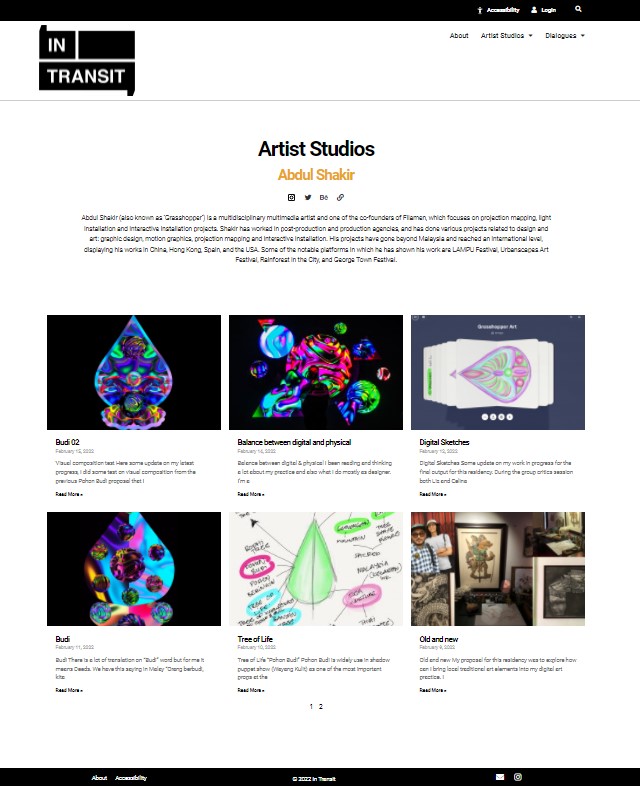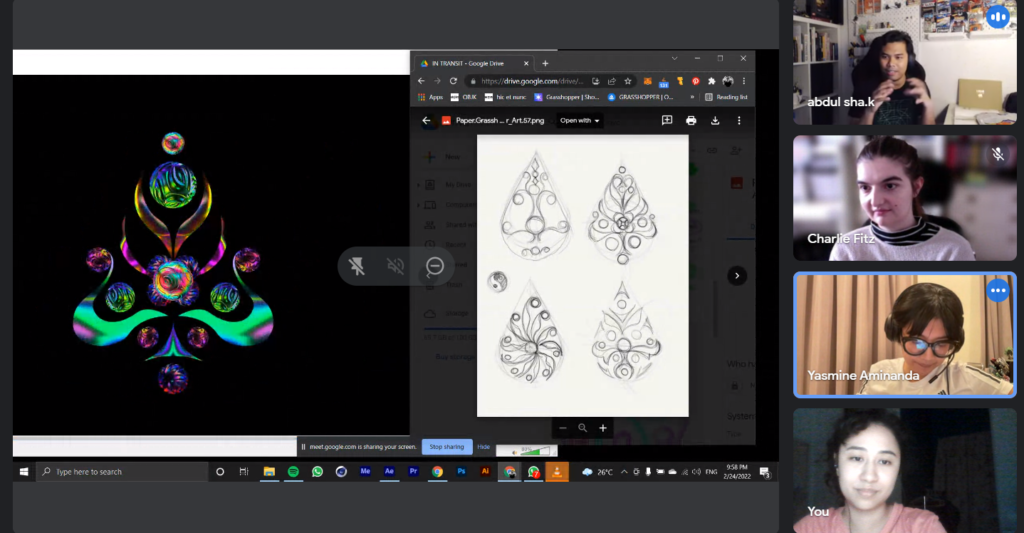
The past two years has seen the art world adapt to engaging with people and carrying out business online; art was suddenly reaching a larger audience. But does going online equate to being fully accessible? Find out how a Malaysian-born curator is addressing the gap of digital accessibility with the launch of a new online art platform.
By ELIZABETH LOW for Lensa Seni
Like for the rest of the world, social distancing brought on innovative means of adapting to the new normal here in Malaysia. In the context of work, leisure and everything in between, so much of our time was, and continues to be, spent online. The art industry, too, sought to go digital to stay afloat, and suddenly art was reaching a larger audience. From exhibitions to artist talks, the massive shift to the digital realm made these experiences accessible from almost anywhere.
While going digital addresses the geographical barrier to a certain extent, does it guarantee an accessible experience?
Digital accessibility
The need for greater digital accessibility in the arts is a gap that Malaysian-born curator Celina Loh wanted to address when she launched the online art platform, In Transit. A Master’s graduate from Chelsea College of Arts, London, Loh began her research on accessibility in the arts while she was still a student, but it was something she delved into sometime only in the last two years.
“The tipping point was the peak of the pandemic when everyone commented on how the art world is accessible online – how art is now available on every screen,” Loh shared. “But is it accessible when my grandpa can’t access the opening to my online exhibition or when my friend is unable to view the exhibition because of the limited Internet bandwidth in her area?”
This was further piqued when Loh was tasked with developing her first online exhibition for her curatorial degree show in 2020. She found herself exploring what accessibility meant to her and how it could translate into the digital sphere. With every new online exhibition she curated, she would consider how she could better present an exhibition in an accessible manner without compromising the integrity of the artist’s artwork or practice.
Loh recalled how easy it was for certain communities in the UK to make the transition when the pandemic first hit. Websites of banking services and grocery stores were already built with the appropriate accessibility guidelines, ensuring that those who needed additional assistance, such as the disabled and senior citizens, were able to independently access these websites.
Unfortunately, although digital accessibility was largely practised by websites of public sector bodies, it was not common practice in many other areas, like the arts.
“I started asking myself, where do we go when we want to learn about making artworks accessible? What does ‘accessible’ even mean? How can I start exploring art accessibility, and are there programmes for that?” remarked Loh. “If you put all of these factors into the equation – my existing digital skills, curatorial interest in art accessibility and frustration that accessibility is not part of art school programmes – that’s exactly how In Transit came about.”
In her pursuit to address this gap, In Transit launched its platform in January 2022 with its pilot residency.
In Transit as a vehicle for change
In Transit was developed to support creative practices and increased accessibility through multidisciplinary projects and digital strategies. One of the platform’s main goals is to develop a series of programmes that will encourage artists to consider accessibility not as a supplementary feature, but as common practice.
However, the heart of In Transit does not lie only in accessibility, but also in collaboration. With the evident lack of representation of the disabled community, the platform aims to foster greater relationships and opportunities for collaborations between able-bodied and disabled artists. Additionally, as an individual who is of East and South-East Asian (ESEA) heritage based in the United Kingdom, Loh’s ambitions include supporting ESEA creatives who are highly underrepresented in the art scene.
“While In Transit champions the representation of European ESEA creatives through our programming, in the longer term, we hope to work closely with institutions based in the ESEA,” added Loh.
The platform also intends to position itself as a space for collective care and skill-sharing between artists from all walks of life – be it established, mid-career, or emerging art professionals. During the pilot residency, it organised artist talks featuring American Internet artist d0n.xyz (Don Hanson) and Singaporean artist Alecia Neo, who shared more about their respective practices in the context of digital accessibility, care and collaboration.
While In Transit is committed to making its website as accessible as possible, the platform acknowledges that it is still actively working on improving the usability and accessibility of its website. Presently, visitors can listen to most of the website using a screen-reader and speech recognition software. Visitors can also control the colour contrast levels and font size, among other things. You can read more on their accessibility statement here.
Pilot residency programme
In Transit’s pilot residency took place between Jan 10 and Feb 26, and it included working with emerging artists to consider and implement accessibility solutions while developing their creative practices. The residency concluded with an online group exhibition which took place between March and April 2022.
Despite it being a digital residency, Loh explained that it still embodied elements of a physical residency, with the exception of a physical studio space. With accessibility training, curatorial support, a dedicated online studio space and group critique sessions, the artists were able to engage with one another while developing their projects from different parts of the world. They were also encouraged to network with one another and with the external artists invited for events.
Several artists were invited to submit proposals for the pilot programme and the selected artists were considered based on whether their practice translated well digitally. It was also important that the artists’ practices would be able to complement one another, allowing for the cohort to get the best out of their engagement with one another. The pilot’s cohort of artists included Charlie Fitz from the UK, Grasshopper (Abdul Shakir) from Malaysia, Yasmine Aminanda from Indonesia, and Pablo Paillole from Spain.
“As the residency focuses on increasing accessibility, it was imperative to invite a disabled artist for his/her/their experience of it,” shared Loh. As a disabled artist, Fitz was already dedicated to considering accessibility as a priority within her practice. Her digital collages and moving image work, as well as her unique perspective as a disabled artist, made her a valuable addition.
The residency had four sessions of accessibility training which provided for an introduction and foundation into digital accessibility allowing artists to be aware of the appropriate measures they can apply to their work. Sessions were led remotely by a professional, Andy Ronksley.
“We’re lucky to have Andy on our team – he’s a freelance digital accessibility specialist who delivers the training sessions and helps me with ensuring we have an accessible site,” said Loh.
During the residency, artists were encouraged to upload works in progress, reflections, and research, allowing the public to follow the development of their projects. “Think of it as a studio wall where you paste random notes and whatnot. Because the artists are compelled to upload three times a week, they’d have to go through accessibility training and implement it during the residency, even if their work is not accessible in the end,” Loh explained. You can view their individual virtual studio spaces here.
Moving forward
Although In Transit’s pilot residency programme has concluded, Loh shared how this is only the beginning for In Transit with future programmes already lined up. “Other than our residency programmes, In Transit has plans to launch a shop and organise online life drawing sessions focusing on disabled bodies. We currently have a hybrid residency lined up with The GAP Studio in Morecambe, UK, featuring graduating students from Lancaster University, so that would be exciting!”
Though the art world has opened its physical doors to the public, their online presence is likely here to stay, so there is no doubt that a platform like In Transit is relevant and necessary in the highly digitised world we live in. This begs the question of, if not now, then when will we take responsibility in prioritising digital accessibility in our local art scene?
If you would like to find out more about In Transit, you can visit its website and follow them on Instagram (@intransit_space). You can view the Nineteen Forty – 2022 virtual exhibition here.
Elizabeth Low is a participant in the CENDANA ARTS WRITING MASTERCLASS & MENTORSHIP PROGRAMME 2021
The views and opinions expressed in this article are strictly the author’s own and do not reflect those of CENDANA. CENDANA reserves the right to be excluded from any liabilities, losses, damages, defaults, and/or intellectual property infringements caused by the views and opinions expressed by the author in this article at all times, during or after publication, whether on this website or any other platforms hosted by CENDANA or if said opinions/views are republished on third-party platforms.






